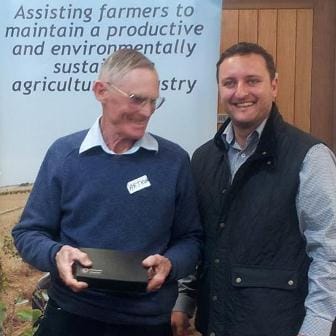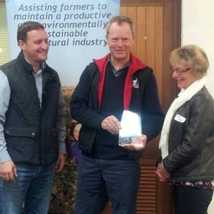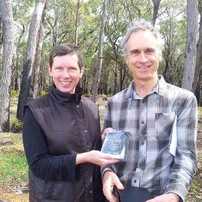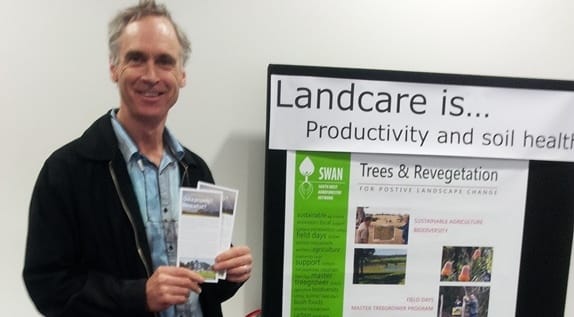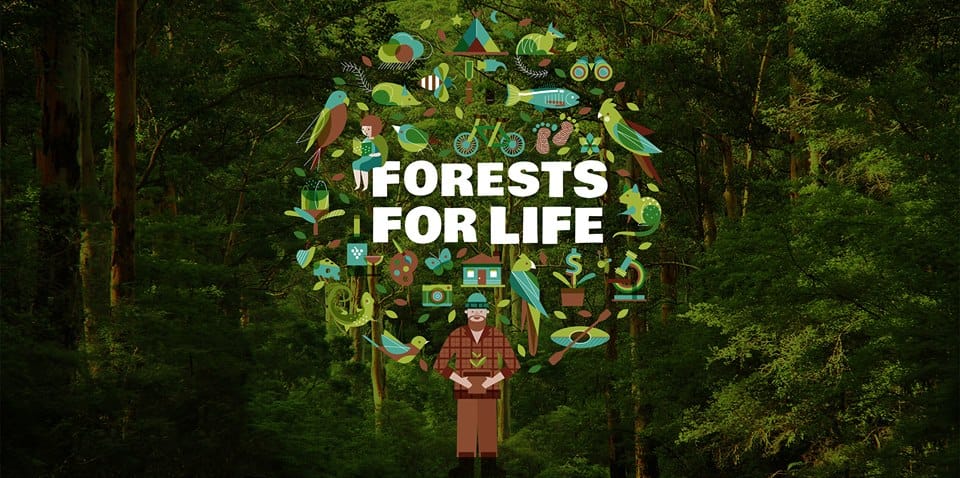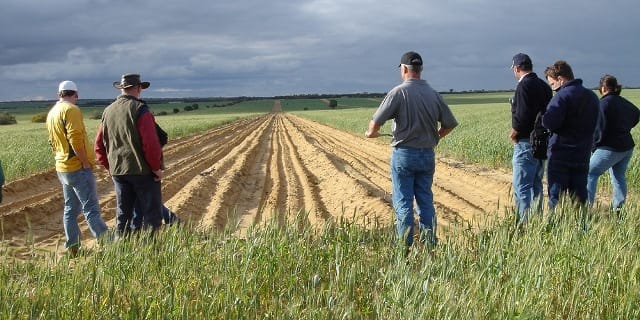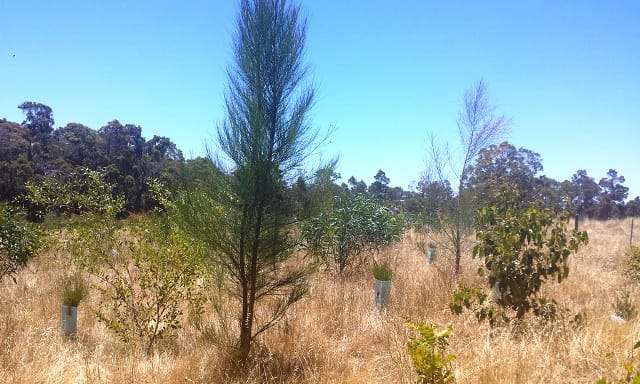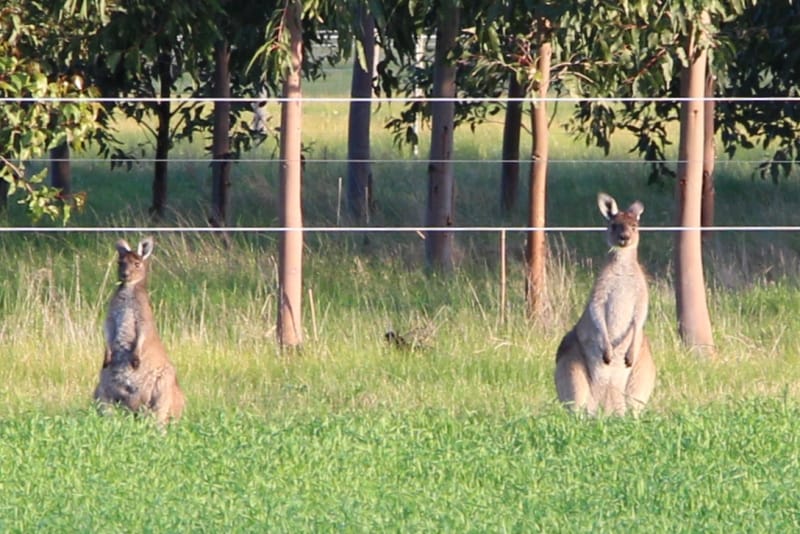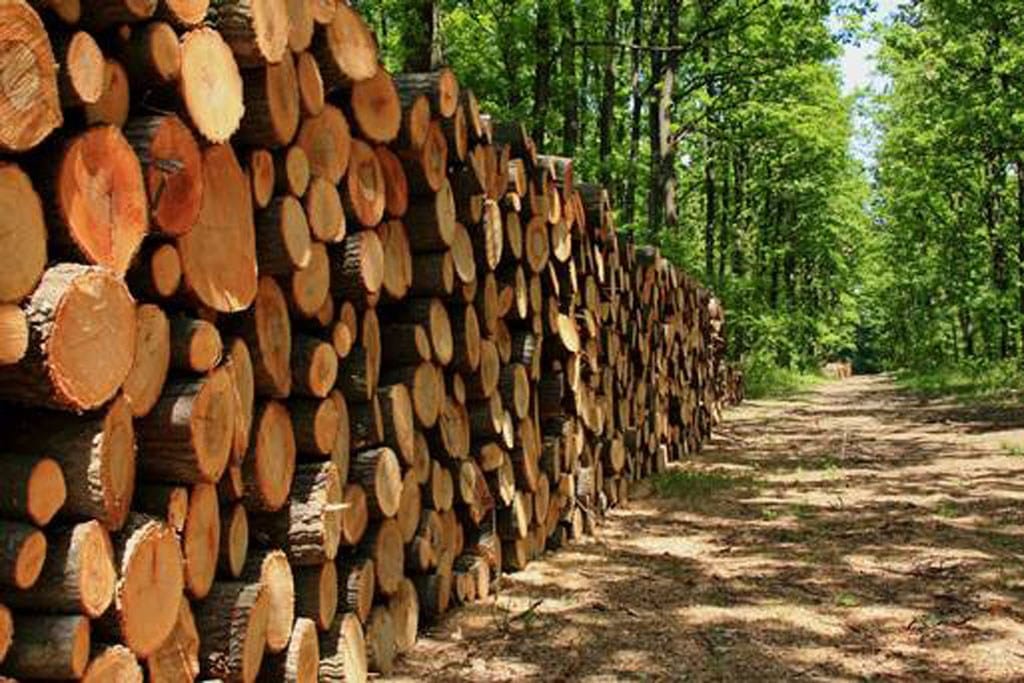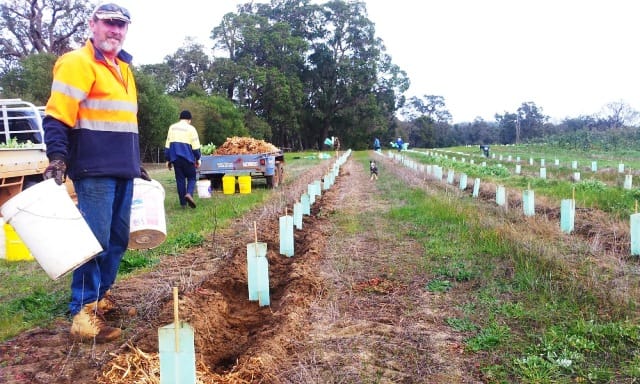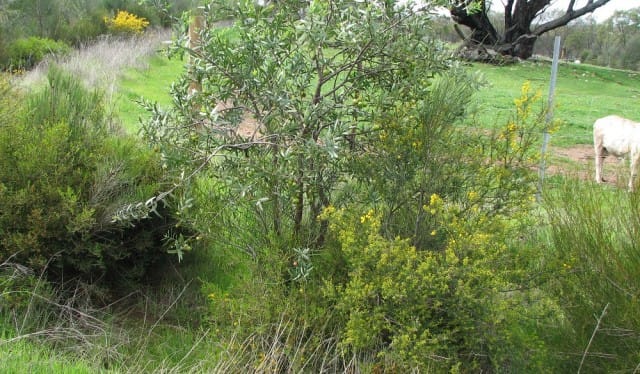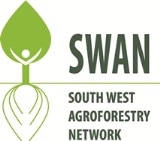WA Tree Farmer of the Year Award
Richard and Robyn Walker from Wilga were announced as the winners of the WA Tree Farmer of the Year Award for 2016 at the Sandalwood & Agroforestry Forum at the Muresk Institute on Friday 16 September. They have an incredible story and are an inspiration to any custodians of native forest.
Maximising the benefits of the thinning operation, including sale of all the “residue resource” produced by thinning, is the KEY element of Native Forest Management. If there is no viable market for all the “residue resource”, the operation is likely to be done poorly and become a significant cost to the landowner.
Richard and Robyn Walker decided they would not commence thinning their forest unless all the residue resource could be sold profitably. This is the core element of their winning project.
Sponsorship of the Award by WA Plantation Resources, Wespine and the Forest Products Commission is gratefully acknowledged.
Richard and Robyn Walker from Wilga were announced as the winners of the WA Tree Farmer of the Year Award for 2016 at the Sandalwood & Agroforestry Forum at the Muresk Institute on Friday 16 September. They have an incredible story and are an inspiration to any custodians of native forest.
Maximising the benefits of the thinning operation, including sale of all the “residue resource” produced by thinning, is the KEY element of Native Forest Management. If there is no viable market for all the “residue resource”, the operation is likely to be done poorly and become a significant cost to the landowner.
Richard and Robyn Walker decided they would not commence thinning their forest unless all the residue resource could be sold profitably. This is the core element of their winning project.
Sponsorship of the Award by WA Plantation Resources, Wespine and the Forest Products Commission is gratefully acknowledged.
The Towers
In 2008, Richard and Robyn Walker purchased a property known as The Towers of which only 25% was cleared for grazing. The remainder was 300ha of unmanaged native forest. After being clear felled for timber over 100 years ago and left un-managed since, the forest was in a sorry state. The forest was overpopulated with trees which had stopped growing, were susceptible to disease and vulnerable to lower rainfall associated with the changing climate.
Despite the approach being unprecedented in Western Australia, we decided to put in place a management plan to develop The Towers forest as a commercially viable native forest. Our aim was for the forest to be a self-funded, managed, growing forest maintaining a healthy habitat for native flora and fauna.
The forest composition ranged from swamps of Tea Tree , Paperbark and Flooded Gum and gullies of Blackbutt (Eucalyptus patens), Grass Trees and Flooded Gum with the majority of the forested area being valley slopes and higher undulating areas of Jarrah (E. marginata) and Marri (Corymbia calophylla) with small pockets of Banksia. There was a complex understory supporting all these areas.
Project planning began in 2008 with license and permit applications approved in 2009. Timber operations were set up under the trading name Towers Timber. At this time (2009), a high proportion of the thinned material we expected to produce had no recognised market.
Seeking market opportunities consumed us for the next two years. In 2011 we secured an agreement to supply Jarrah “snipped char block” and had genuine enquiry for Marri chip logs. With that we decided to commence operations.
We had to educate contactors to meet our requirements for thinning and product cutting. Our process was very different to the standard native forest harvesting and production techniques practiced in Western Australia at the time.
Tree marking was done with a target Basal Area of 15m2/ha. Trees and logs were marked to retain and then all unmarked trees and logs were removed. The decision making process was driven by what was to be kept rather than what was to be removed. It is anticipated we will have completed this forest thinning process by the end of the 2017 season.
It is clear that the forest remaining after the thinning operation is in a much improved condition.
We have demonstrated that farmers owning tracts of unmanaged native forest have the opportunity of generating a respectable income from previously unproductive land by adopting similar management practices of their native forests.
Ideally, the extensive State owned forests of Western Australia might be managed in a similar way at some future time.
The products of our operation are considered carbon neutral and environmentally sustainable. The available and new markets for our products are now growing. Other potential markets are emerging.
Clear environmental benefits are delivered. The remaining trees are less prone to disease and drought, are growing at a greater rate and are sequestering more carbon. The fuel load reduction within the forest lessens fire risk. The thinned native forest looks green and vigorous with broad healthy crowns when compared to nearby unmanaged areas.
In 2008, Richard and Robyn Walker purchased a property known as The Towers of which only 25% was cleared for grazing. The remainder was 300ha of unmanaged native forest. After being clear felled for timber over 100 years ago and left un-managed since, the forest was in a sorry state. The forest was overpopulated with trees which had stopped growing, were susceptible to disease and vulnerable to lower rainfall associated with the changing climate.
Despite the approach being unprecedented in Western Australia, we decided to put in place a management plan to develop The Towers forest as a commercially viable native forest. Our aim was for the forest to be a self-funded, managed, growing forest maintaining a healthy habitat for native flora and fauna.
The forest composition ranged from swamps of Tea Tree , Paperbark and Flooded Gum and gullies of Blackbutt (Eucalyptus patens), Grass Trees and Flooded Gum with the majority of the forested area being valley slopes and higher undulating areas of Jarrah (E. marginata) and Marri (Corymbia calophylla) with small pockets of Banksia. There was a complex understory supporting all these areas.
Project planning began in 2008 with license and permit applications approved in 2009. Timber operations were set up under the trading name Towers Timber. At this time (2009), a high proportion of the thinned material we expected to produce had no recognised market.
Seeking market opportunities consumed us for the next two years. In 2011 we secured an agreement to supply Jarrah “snipped char block” and had genuine enquiry for Marri chip logs. With that we decided to commence operations.
We had to educate contactors to meet our requirements for thinning and product cutting. Our process was very different to the standard native forest harvesting and production techniques practiced in Western Australia at the time.
Tree marking was done with a target Basal Area of 15m2/ha. Trees and logs were marked to retain and then all unmarked trees and logs were removed. The decision making process was driven by what was to be kept rather than what was to be removed. It is anticipated we will have completed this forest thinning process by the end of the 2017 season.
It is clear that the forest remaining after the thinning operation is in a much improved condition.
We have demonstrated that farmers owning tracts of unmanaged native forest have the opportunity of generating a respectable income from previously unproductive land by adopting similar management practices of their native forests.
Ideally, the extensive State owned forests of Western Australia might be managed in a similar way at some future time.
The products of our operation are considered carbon neutral and environmentally sustainable. The available and new markets for our products are now growing. Other potential markets are emerging.
Clear environmental benefits are delivered. The remaining trees are less prone to disease and drought, are growing at a greater rate and are sequestering more carbon. The fuel load reduction within the forest lessens fire risk. The thinned native forest looks green and vigorous with broad healthy crowns when compared to nearby unmanaged areas.

